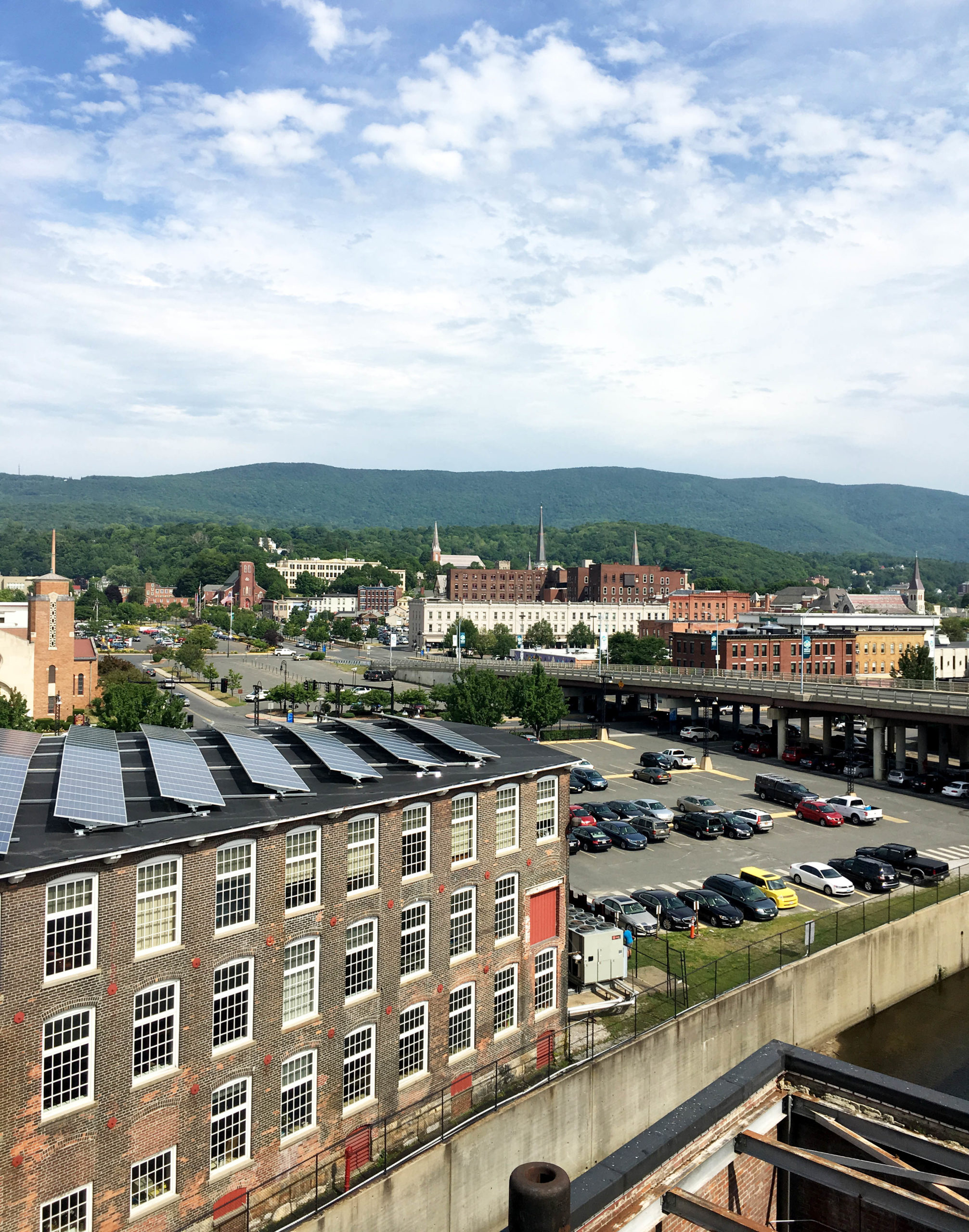 The Rev. Dr. Thomas Frank has served as a pastor, teacher and leader in United Methodism and historic preservation for decades, in recent years serving as University Professor at Wake Forest University and President of Partners for Sacred Places. In the wake of the publication of his book, Historic Houses of Worship in Peril: Conserving Their Place in American Life, Bob Jaeger sat down with Frank to discuss how he came to write the book, and what he learned about the value and vulnerability of churches today.
The Rev. Dr. Thomas Frank has served as a pastor, teacher and leader in United Methodism and historic preservation for decades, in recent years serving as University Professor at Wake Forest University and President of Partners for Sacred Places. In the wake of the publication of his book, Historic Houses of Worship in Peril: Conserving Their Place in American Life, Bob Jaeger sat down with Frank to discuss how he came to write the book, and what he learned about the value and vulnerability of churches today.
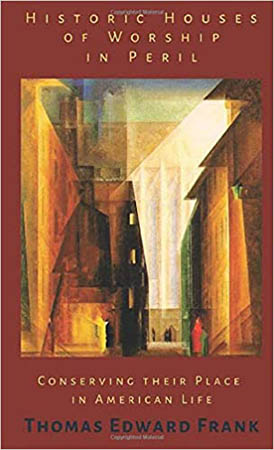
©Amazon
Bob Jaeger: You’re one of a small handful of people in America who have degrees in divinity and historic preservation. Can you tell me how that came about?
Tom Frank: Well, I’ve always been interested in urban studies and understanding how cities evolve. Going way back, though, I’ve always been fascinated with ruins. When I was a little boy, I remember climbing around in a ghost town in Colorado and disappearing up on the second floor of an abandoned building with my mother screaming my name for fear I’d fall through the floor.
It’s been a lifelong fascination with older buildings and the stories they tell. That evolved into a lot of reading and writing about sense of place and what gives particular locales their genius loci — the spirit of the place. And then I discovered the historic preservation Master’s degree program at Georgia State University.
My degree work really deepened and rounded out a lot of my knowledge. And it fits very closely with the theology that I’ve always lived by, which is that faith is meant to be lived. It’s not an abstract ideology. To me, it’s about how you live.
I retired from ordained ministry after 45 years, and over that time began to realize how so many ordained people consider the building secondary or an afterthought. They’d rather not have to bother with it. And I’m like, no, this is the space you’ve been given as a resource for ministries.
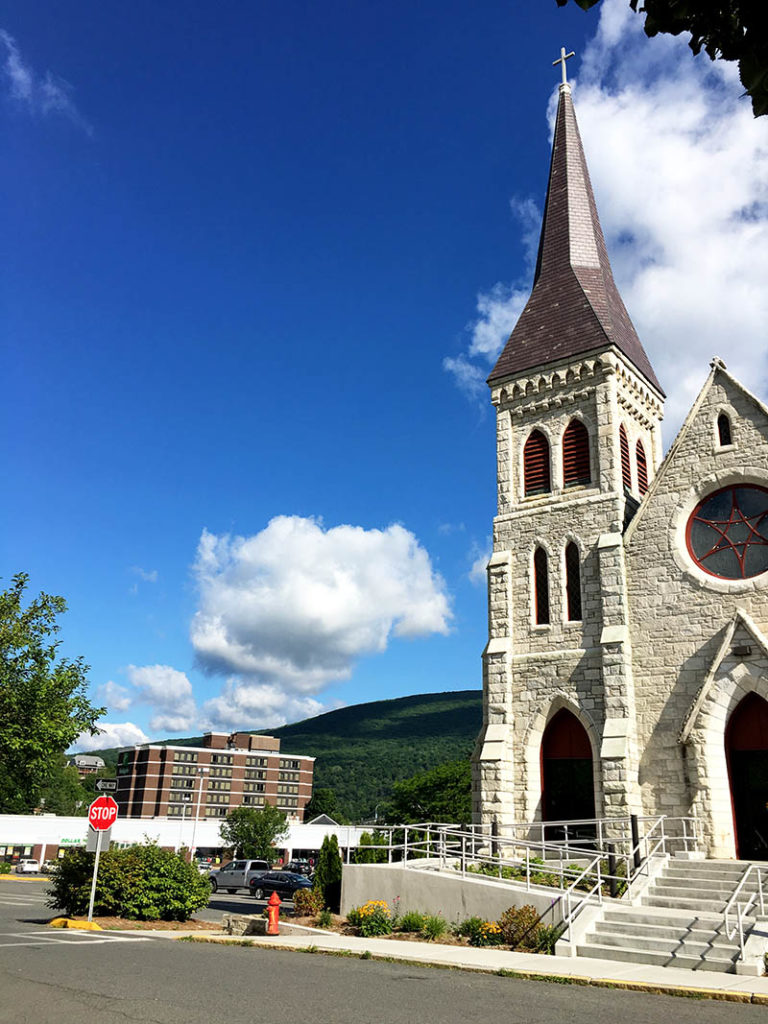
All Saints Episcopal was left isolated when most of its neighborhood was demolished in urban renewal around 1970.
BJ: So what got you interested in North Adams, Massachusetts as a place to examine? And when did you realize there was a story there regarding closing churches, transitioning churches, sacred places at risk?
TF: Sometime around 2006, my wife, Gail* and I had been going to the Williamstown Theater Festival in Williamstown, which is adjacent to North Adams.
One day we drove through North Adams and I began to really notice that there were several different ethnic Roman Catholic parishes, some of which had closed. I noticed that the Unitarian Universalist Building have been converted to a sort of a museum by an artist. And the Massachusetts College of Liberal Arts was using the old synagogue as its auditorium.
So it occurred to me that this is a microcosm of America. Where else am I going to find this range of religious groups on a compact, accessible scale, where I could meet people who didn’t hesitate to share their memories and tell what they’re worried about? I made an effort to meet people in the houses of worship and tried to attend services as often as possible. I met with the Mayor and the town planners, a banker, store owners, artists, people who ran galleries, and most importantly, the people who ran the North Adams Historical Society.
What I saw helped me develop a model approach that would encourage congregations to start thinking creatively about the use of their buildings, whether or not they are planning to stay. One key principle: if you, as a congregation, are planning to sell it, please talk to the people in the town before you just put a real estate sign in the front yard.
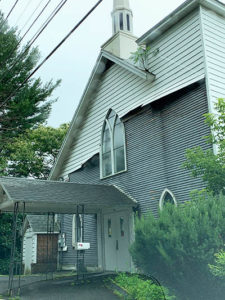
A small former Roman Catholic parish church being repurposed as a restaurant was thwarted by financial and architectural challenges.
BJ: But is anybody thinking about the larger response we should be making to the losses and transitions of older sacred places? Philanthropies, county planners, denomination offices, and so on? This problem will grow unless we find creative ways to work with these congregations or ease the transition in a responsible way. Is anybody thinking like that?
TF: No. Not in a national way, and not in the various Christian denominations. The Roman Catholic Diocese of Springfield has been overwhelmed, closing multiple parishes in several cities across the region. The planners, the successive mayors of North Adams have really wrestled with it. They’ve tried everything they can think of to attract someone who will use the buildings in a creative way.
The United Methodist church in North Adams was insured for seven figures but sold for $125,000. A congregation like that one would be better positioned if it knew what’s involved in selling a building or adapting it to something else.
BJ: A smaller congregation doesn’t necessarily have to close some day. But it does need to manage things differently, including the building. But given constrained resources and capacity, how can we help these congregations remain healthy?
TF: I write in the book about the sense of place, which has the power to capture people emotionally. What makes us as a congregation so attached to this place? And not only the building, but its place within a neighborhood or on a street?
And how does it connect to the character of the town or neighborhood? The church is a public place that’s privately owned but serves a public function. And to me, the shift that has to take place is to view our buildings as facing the public.

St. Francis Roman Catholic Church during demolition.
INSET:
The steeple from the demolished St. Francis reused as a monument on the lawn of the new consolidated Roman Catholic parish.
In North Adams, the steeples are 160 feet high. They’re right there – an unmistakable presence on the street and an essential element in North Adams’ sense of place. So the question is, how do you parlay that public-facing character into new ways of interacting with the community, and opening up your facility?
There are two ways to start. One is to get people studying the issue and looking at possible ways of addressing the issues you face. Another way is to undertake a pilot program, like the Haywood Street Congregation in Asheville, North Carolina, They’ve gathered a congregation of people without a place to live, people who are often not welcome in other houses of worship or neighborhoods . Thanks to the passion of a local artist, the congregation commissioned a rare and magnificent fresco depicting the people without homes who participate in the programs there. The fresco exemplifies how people are recognized as full human beings with a place to belong at this historic repurposed building.
BJ: It’s one thing when a church has become empty and you have a blank slate to reimagine the place. But if the congregation is still there, you need to figure out ways to introduce new programs and new life that energizes the congregation and expresses its mission. Partners wants to help congregation survive and thrive, if that’s possible.
TF: True, but people have incredible, powerful strategies for avoiding what models and examples tell them. That model is them, not us. It’s an excuse to write it off instead of doing something new.
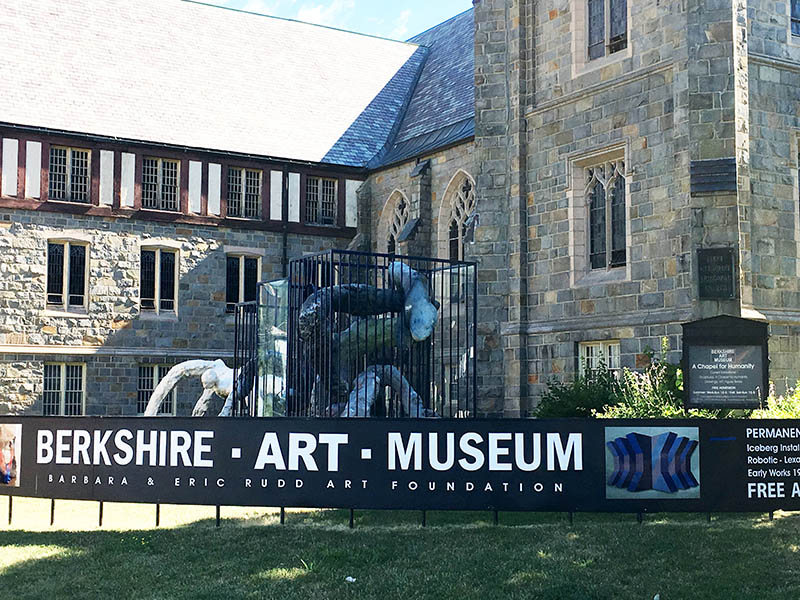
The United Methodist Church reused as an art museum.
We need to look at ourselves, our context, the ebb and flow of our community. What kind of initiatives does this community need, and let that inspire you to do something that’s appropriate for YOU. Build on your strengths. And that means going out and meeting the people around you — you may be surprised to learn that local residents, the business and non-profit communities, public agencies, people who don’t participate in your congregation, recognize and appreciate your building more than you thought they did.
Another paradigm shift that comes to mind: starting to see your building as dynamic, not static. Just because spaces have been used for X, Y, and Z over the years, it doesn’t have to be that way forever. It’s like a family living in a house. People get used to using their house in a certain way. Sometimes you need a family member or a neighbor to come in and comment on something you haven’t noticed before. They might say, “if you took out this wall, you would create a really great open space with lots more light in the room.”
We got so accustomed to our spaces, to the point where we don’t see them anymore and they become static in our minds. And so how do you shake that up and help people see it with fresh eyes? Like the woodwork carved from trees that can’t be found anymore, or the remarkable acoustics in your worship space. So if you renovate, can you use that irreplaceable wood in a new, creative way? Are there new community-serving activities that will take advantage of those acoustics?
It helps to think systemically about your community — the patterns of everyday life on the street and the way varied groups draw on networks of relationships to address problems and possibilities. This way of looking comes out of the field of urban studies inspired by Jane Jacobs and others. How do people actually interact and use a town landscape or neighborhood landscape? By thinking systemically, you might develop creative ideas about how to adapt facilities and make them work financially so the congregation can continue to worship there.
BJ: Tom, you’ve done important work here. Thanks so much for sharing how your project evolved and what you’ve learned.
*Editor’s note: The Rev. Dr. Gail O’Day, New Testament scholar who most recently served as Dean of the Wake Forest University School of Divinity, died in 2018.

